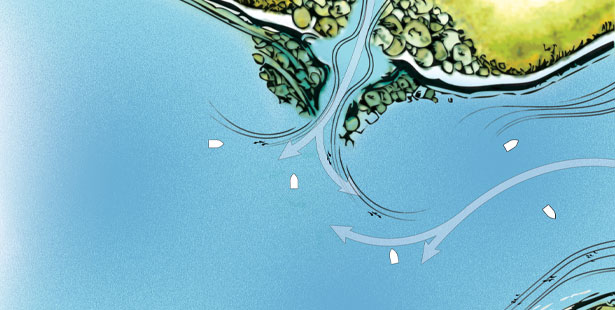Tackle Techniques
How to Pitch
- Details
- Written by Hannes

Preston demonstrating how to pitch
The “How to” and “Why” of Flipping
By Grant Hewitt*
Bass anglers use the term “Flipping” and many may have wondered “What does it mean?” Well, let’s take a closer look.
Definition: Flipping is a power-finesse presentation used by anglers to target bass holding in shallow cover. The technique does not incorporate casting or even pitching but rather the manipulative actions of rod and line to poetically place your bait in a pinpointed zone. It can be classed as a power fishing tactic as the intention of the method is to cover water while in the same breath can also be denoted as a finesse presentation as your bait should be presented with extreme stealth and precision.
How to Flip: Position your boat the distance you'll be fishing from the cover you've selected. Point the rod out and away from the boat toward your target and drop the lure to the bottom and engage the reel. The rod should be parallel to the water and at a comfortable height with the lure resting on the bottom with just a little slack in the line. What you have essentially done is measure how much line you are going to be dealing with at your chosen spot. Naturally this is a measurement you will need to repeat when changing locations.

Grab the line loosely with your left hand between the reel and the first guide and pull the line to your left while lifting the rod tip.
(Photo 2)
Raise the rod to make the lure swings back close to the body and then lower the rod tip to make the lure swing forward.
(Photo 3)
Using only your wrist, roll the butt of the rod to the inside of your arm. As it moves past the rod tip, continue raising the rod as you feed line with your free hand. As the lure nears the target, lower the rod top again and make the bait touch down softly and precisely on target by stopping the bait just before it enters the water. Let go of the line in your free hand and immediately place it on the reel.
(Photo 4)
Make sure you're ready to strike before beginning your retrieve and set the hook immediately when a bite is detected. To reach further into the cover, let out a little more line and exaggerate your swing.
Flipping is a situational concept and will be more successful when an angler determines the right situation to adopt the method. Generally speaking, flipping is a shallow water tactic. By this I mean anything down to around 7-8ft. Any deeper than 8ft, you will most certainly struggle to control the amount of line in and around the equation.
Not just any shallow water calls for flipping. Shallow cover is the indicating element and the dingier the water the better your chances. The fish will hold shallower in dirtier water and allow the flipper to get closer and more involved with the cover. A long tapering shallow bank is not as effective as a steeper sloping bank or area. The fish on tapering banks will feel less protected and understandably more aware of incoming boats than fish that can sit tight to the bank but still have the refuge of a foot or two of water on their backs. The heavier the cover, the more targets you have to flip. Choose the nastiest areas with the most hang ups and snags and get down to business. The more inexperienced anglers and comfort orientated anglers will ignore tougher to target areas meaning less pressurized bass!
For sure, you could employ other tactics in these zones, but remember, with flipping you can stalk these fish and put less water between you and the bass giving you the upper hand when it comes horsing them out the gnarly over-growth. The only factor that could change your mind here would be excessively clear water - that really blows your cover!! In this case rather back off and submit to more conventional angles.
The most important aspect to taking advantage of a solid flipping pattern is finding the pattern within the pattern. Bass fishing legend and undoubtedly one of the best flippers in the world, Denny Brauer explains this concept. "When my lure enters the water, I'm mentally trying to see what the lure is doing under the water. I attempt to determine if the bass has taken the lure on the fall, after I've jigged it a couple of times, or, if the bass is taking the bait when it's laying on the bottom. By knowing what the lure is doing when the bass takes it, I can learn what technique produces the most strikes and how long to leave my bait in a particular spot. For instance, if I notice that the bass are taking the baits


 Visit us our
Visit us our